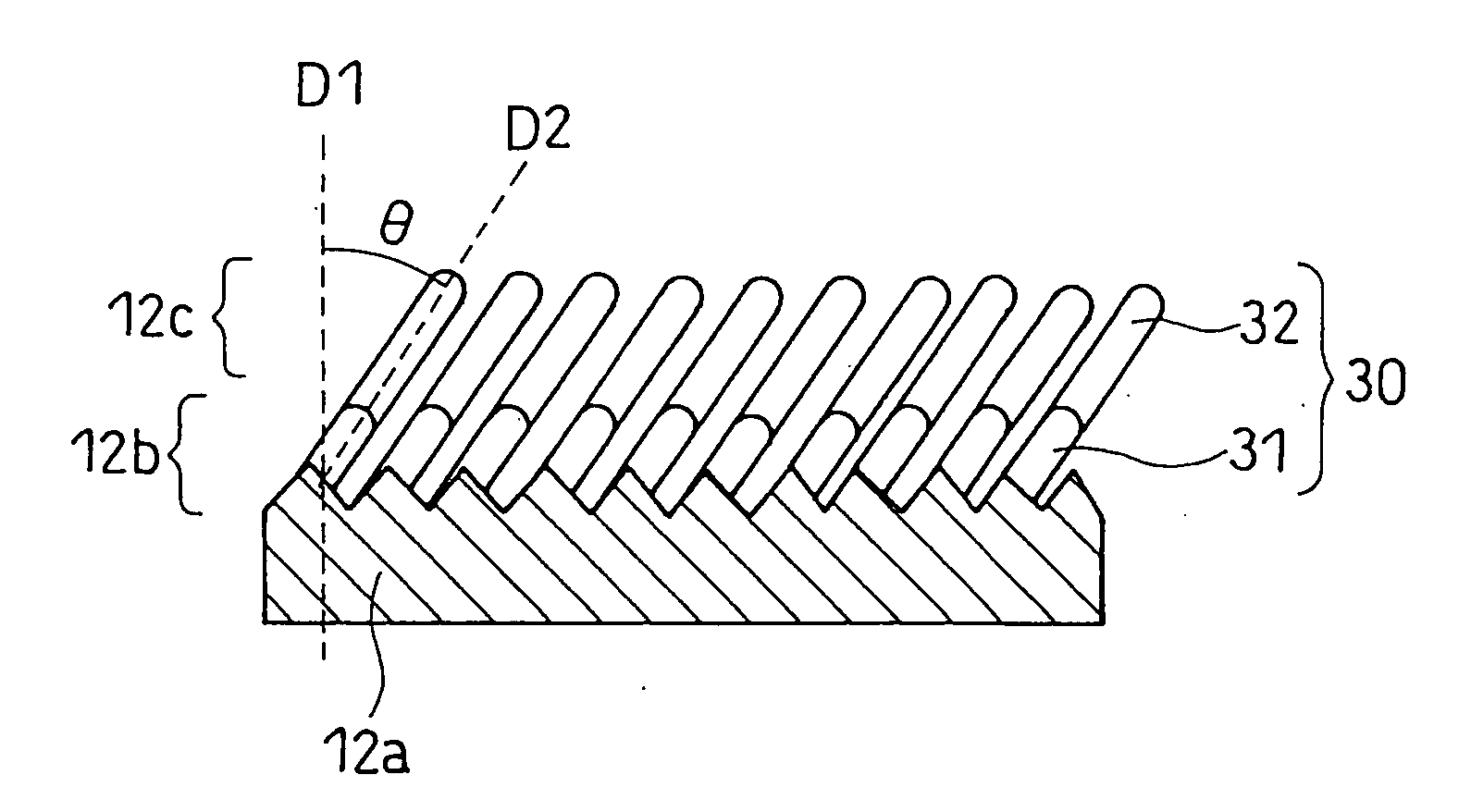Negative electrode for lithium ion secondary battery, method for producing the same, and lithium ion secondary battery
a secondary battery and negative electrode technology, applied in the field of lithium ion secondary batteries, can solve the problems of difficult even for a metal capable of being alloyed with silicon
- Summary
- Abstract
- Description
- Claims
- Application Information
AI Technical Summary
Benefits of technology
Problems solved by technology
Method used
Image
Examples
example 1
[0092] A layered-type lithium ion secondary battery as illustrated in FIG. 1 was produced.
(i) Preparation of Positive Electrode
[0093] A positive electrode material mixture paste was prepared by fully mixing 10 g of lithium cobaltate (LiCoO2) powder (positive electrode active material) with a mean particle size of approximately 10 μm, 0.3 g of acetylene black (conductive agent), 0.8 g of a polyvinylidene fluoride powder (binder), and a suitable amount of N-methyl-2-pyrrolidone (NMP). The paste was applied onto one face of an aluminum foil positive electrode current collector 11a with a thickness of 20 μm, dried, and rolled to form a positive electrode active material layer 11b. This was then cut into a predetermined shape to obtain a positive electrode. In the positive electrode, the positive electrode active material layer on one face of the aluminum foil had a thickness of 70 μm and a size of 30 mm×30 mm. A lead was connected to the backside of the current collector having no po...
example 2
[0126] A comparison was made between the case of forming an intermediate layer made of Mo and the case of forming an intermediate layer including silicon and oxygen. In order to compare negative electrode capacity, test cells were produced by using lithium metal as a counter electrode.
(i) Preparation of Counter Electrode
[0127] A 0.3-mm-thick lithium metal foil was cut into a square of 32 mm, and a lead was connected to the edge thereof.
(ii) Production of Test Battery
[0128] The negative electrode 1A of Example 1 was used as the negative electrode. Lithium was not deposited on the active material layer.
[0129] The counter electrode made of the lithium metal foil was opposed to the negative electrode active material layer 12c of the negative electrode 12, with a separator 13 interposed therebetween, to form a thin electrode assembly. The separator used was a 20-μm-thick polyethylene micro-porous film available from Asahi Kasei Corporation. This electrode assembly was inserted, to...
example 3
[0142] When the intermediate layer including silicon and oxygen is represented by SiOx, the range of x was examined.
[0143] The following negative electrodes 3A to 3E were produced in the same manner as in Example 1, except that in forming an intermediate layer, the oxygen flow rate and the deposition time were changed. Also, test batteries 3A to 3E were produced in the same manner as in Example 1 except for the use of the negative electrodes 3A to 3E. When the intermediate layer of each of these negative electrodes was formed, the temperature of the current collector was 320° C. Lithium was deposited on the active material layer in the same manner as in Example 1.
[0144] Negative Electrode 3A
[0145] A negative electrode 3A was produced in the same manner as in Example 1, except that in forming an intermediate layer, deposition was performed by setting the oxygen flow rate to 5 sccm and setting the deposition time to 20 seconds. A test battery 3A was produced in the same manner as i...
PUM
| Property | Measurement | Unit |
|---|---|---|
| thickness | aaaaa | aaaaa |
| thickness | aaaaa | aaaaa |
| thickness | aaaaa | aaaaa |
Abstract
Description
Claims
Application Information
 Login to View More
Login to View More - R&D
- Intellectual Property
- Life Sciences
- Materials
- Tech Scout
- Unparalleled Data Quality
- Higher Quality Content
- 60% Fewer Hallucinations
Browse by: Latest US Patents, China's latest patents, Technical Efficacy Thesaurus, Application Domain, Technology Topic, Popular Technical Reports.
© 2025 PatSnap. All rights reserved.Legal|Privacy policy|Modern Slavery Act Transparency Statement|Sitemap|About US| Contact US: help@patsnap.com



